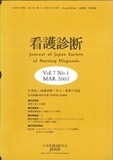Japanese
English
- 有料閲覧
- Abstract 文献概要
- 参考文献 Reference
乳房または甲状腺を摘出する患者の周手術期にフィールドワークを行い,病気や手術によって自分の身体に急激な変化が起こったとき,人は身体とボディイメージの変化にどのように対処していくのかという問いについて考察した.患者たちは,術前から「否認の方略」「棚上げの方略」「理由探しの方略」「セレモニーの方略」「取り込みの方略」「報奨の方略」をうまく駆使し,身体に関する知覚や感覚のさまざまな変化を「回復のストーリー」のなかに回収して,前向きなボディイメージをつくりあげていく力をもっていた.また,その途中で一時的に身体への注目度や関心が増大して,看護診断〈ボディイメージ混乱〉の状態と近似する諸反応が出現することがあっても,多くの場合は回復のストーリーを強化・成熟させ,自らの力でボディイメージの混乱状態を回避できるということもわかった.
The purpose of this study was to describe the strategies that used to deal with body-image changes in perioperative. Methodology was primarily qualitative with active participations and in-depth interviews, which was micro-ethnography based upon“social constructionism”. Five patients treated breast cancer and two patients treated thyroid cancer participated in this study to the last. Data were collected by means of tape-recorded interviews focused on their body experiences or body-image issues, and detailed field notes. In total, six strategies of the participants were described. Four strategies found as preparations for body-image changes before their operations, which were“denial”,“putting-off”, “discount”and“ceremony”. And“taking-in”was a coping strategy in order to build a recovery-story by means of recalling their body perceptions after operations. In addition, after four or five days from operations, two strategies,“discount”and“reward”, were used toward the establishment of their new body-images. It was found that the participants were focused on a concern with feeling recovery, and the use of deliberate strategies that helped to engender positive“recovery-story”in this regard. Indeed, they concentrated their libido in their own body perceptions at one point after operations, but they could get out of the state of“body-cathexis”. This study's findings indicate that human beings have potential power and the strategies used to deal with body or body-image changes.
Copyright © 2002, Japan Society of Nursing Diagnosis. All rights reserved.


